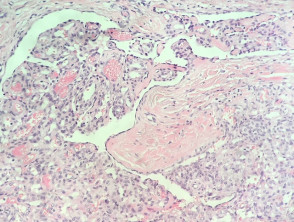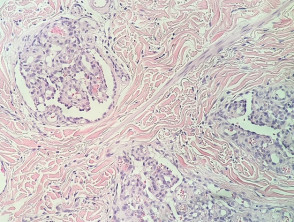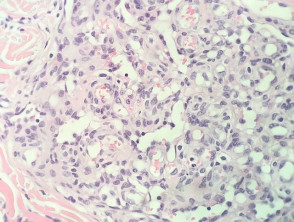Introduction
Glomeruloid haemangioma is a rare benign cutaneous vascular proliferation that typically arises in patients with a history of POEMS syndrome.
Histology of glomeruloid haemangioma
In glomeruloid haemangioma, the histopathology shows numerous dermal ectatic vascular spaces lined by flat endothelial cells. Inside these dilated vascular spaces are a conglomeration of capillaries lined by plump, swollen endothelial cells, filled with red blood cells, resembling renal glomeruli (figures 1–4).
Glomeruloid haemangioma pathology
Special studies for glomeruloid haemangioma
None are generally needed.
Differential diagnosis for glomeruloid haemangioma
Other conditions that should be considered in the differential diagnosis for glomeruloid haemangioma include:
- Angiosarcoma shows cytologic atypia and an infiltrative growth pattern
- Intravascular papillary endothelial hyperplasia (Masson tumour) shows the formation of papillary structures lined by hyperplastic endothelial cells in the vascular lumen.


